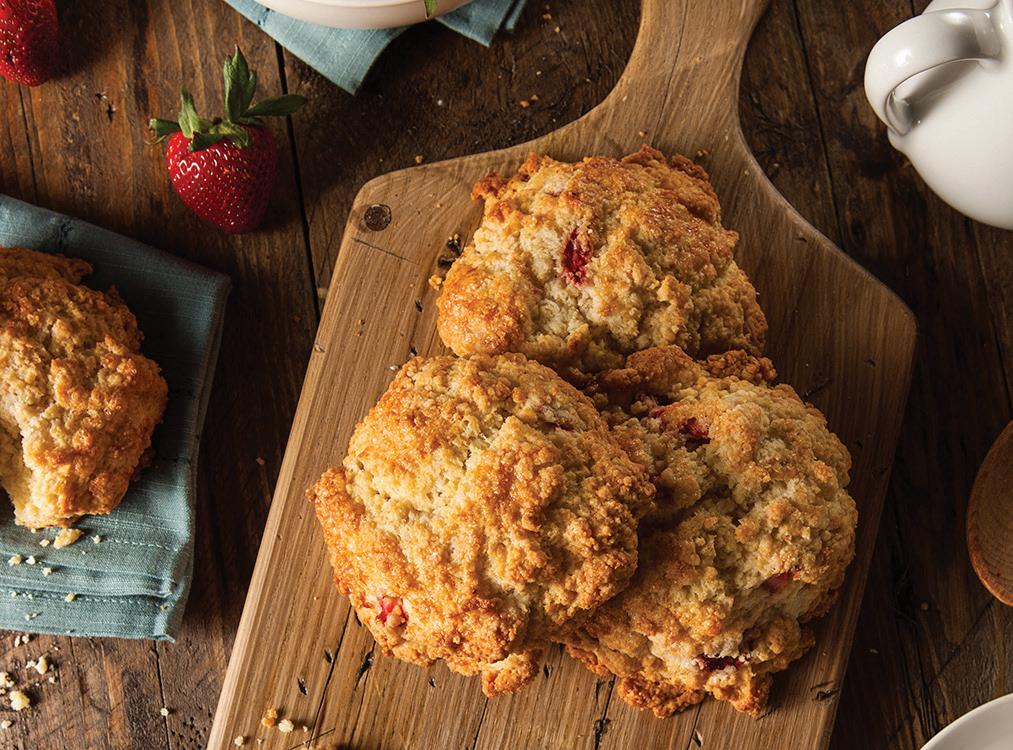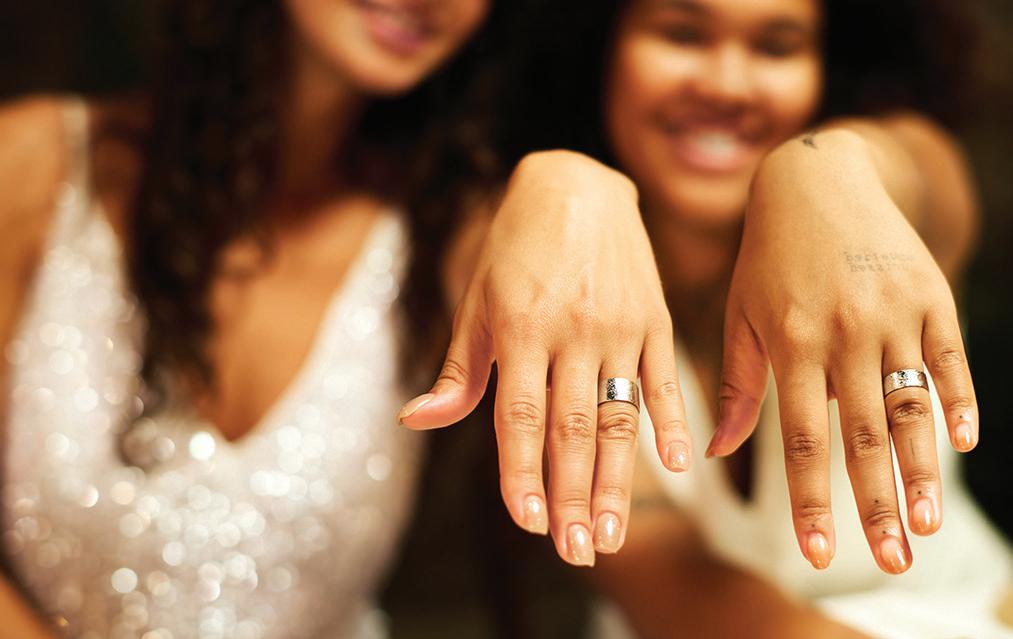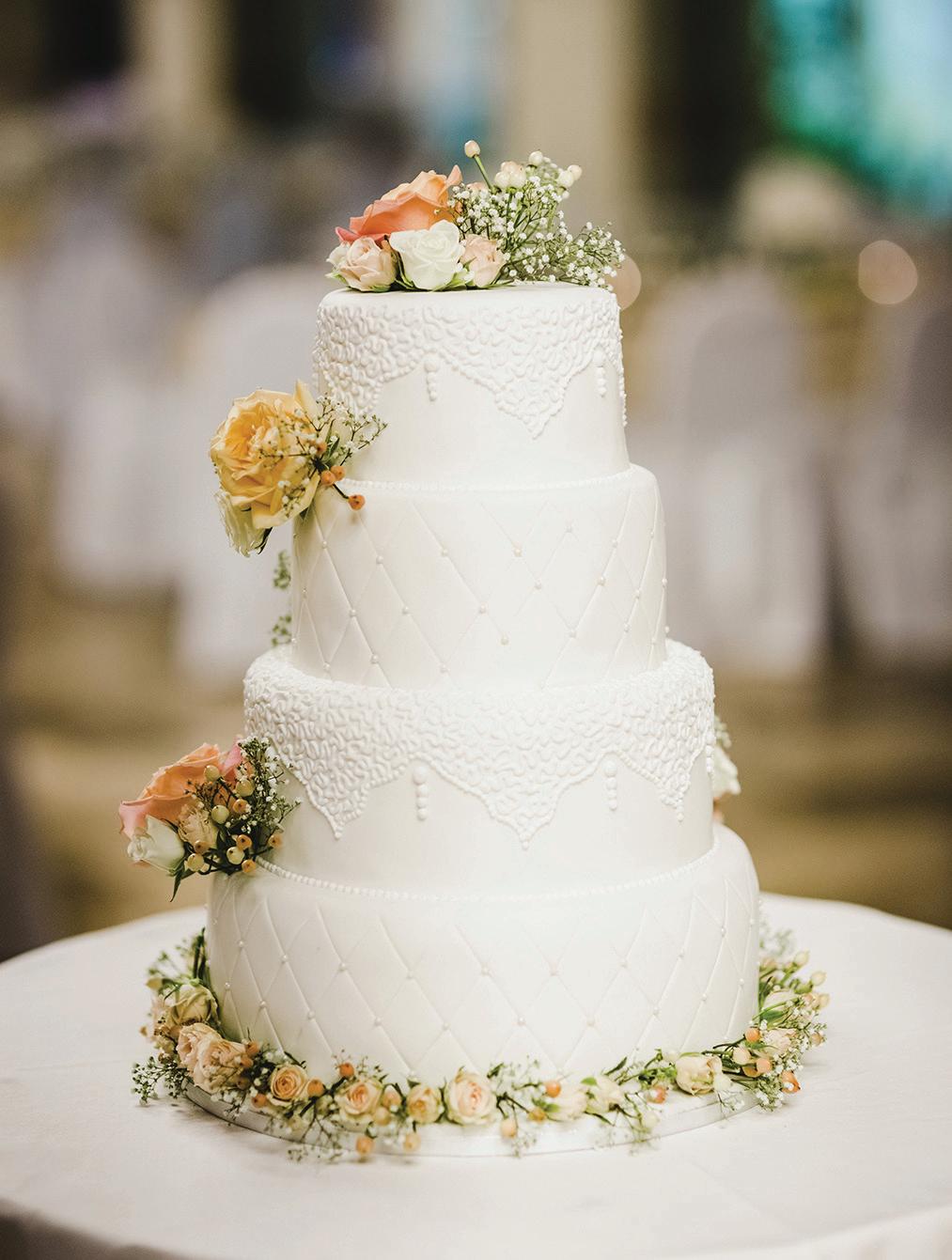
4 minute read
From Scones to Rooster Combs: The History of the Wedding Cake
by Audrey Erickson
Breaking the glass, throwing the bouquet, jumping the broom… weddings have countless traditions. Some traditions are universal and others are specific to a religion, culture, or even individual family. Every tradition that you may see when the happy couple says “I do,” comes with its own origin and story. One of the sweetest traditions that you’ll see at most marriage celebrations is the wedding cake. Read on to learn about how the cake came to be a centerpiece of the wedding industry!
While many cultures throughout history have had some kind of feast or celebratory dish associated with marriages, the tradition of the wedding cake that we know today can most closely be traced back to the ancient Greeks and Romans. However, it was not always as sweet a ritual as we know it to be today. In those times, a bread or scone-like cake was broken over the bride’s head after the wedding ceremony, to symbolize the new couple’s fertility. In those times, grains were very closely associated with fertility, as the Greek and Romans saw wheat and grains as a symbol of agriculture and the earth’s fertility. Even the Roman goddess Ceres was the goddess of both the harvest and fertility, as was her Greek counterpart, Demeter. To invite in good fortune from these goddesses, the newlyweds would consume a few crumbs of the broken cake, and the wedding guests would eat the rest of the crumbs for good luck. As the Romans began to conquer other empires and lands, they took their customs with them, spreading the tradition of breaking bread.
By the time the wedding cake got to Britain around 43 CE, the Brits put their own spin on the tradition, throwing bread at the bride to wish her fertility (which eventually morphed into the popular rice-throwing tradition we know today). Baked goods punctuated weddings for centuries to come–“made with love” takes on a whole new meaning–but the specifics of the common practice continued to morph with the times and across Europe. As sugar became more readily available, the dense, nutty cakes that had been used gave way to more elaborate frosted buns, spiced scones, and cookies. This dessert spread was presented in a high, precarious stack, made by the couple’s family. A departure from crumbs in your hair or having bread rolls thrown at you, the couple now had a new challenge: if the two could reach over the piled-high tower and kiss without sending any sweets falling to the ground, it represented a good fortune in their marriage. If it fell? Well, wedding guests took to throwing cakes from the pile at the bride and groom, just to make sure the good fortune followed them.
While the tradition of piling pastries gained popularity over the next few generations, the sugary treats used weren’t specifically associated with marriage traditions. Wedding guests would bring whatever they knew how to bake, or what they had ingredients for. In fact, the first wedding-specific bake wasn’t a cake at all, but a savory pie. In 1685, a recipe for “bride’s pye” was made. The pie was a common flaky crust and contained lamb testicles, rooster comb, oysters, and pine kernels. Eating the pie was believed to allow the couple to have a happy marriage together, so following the ceremony, the newlyweds and all of their guests would eat the entire pie; to refuse a slice was like a guest wearing white to a wedding today! Good things could come from bride’s pye though, as each pie contained a ring inside. Whoever had the slice with the ring would be favored to get married next–a precursor to the throwing of the bouquet!
Bride’s pye began to fall out of fashion (a good thing, given the ingredients!) and sweet cakes started to become the standard way to celebrate. While they were often bare, simple cakes in earlier years, refined sugar became much cheaper in the 17th century, allowing chefs to frost cakes in the white, airy frosting that so many wedding cakes have today. Similar to the iconic wedding dress, the white cake also symbolizes purity and virginity, in addition to being a show of status and wealth.
Early wedding cakes were small, simple, and short–not the extravagant, heavily-decorated and multi-tiered cakes you see on the homepage of Pinterest. While no one knows for sure when wedding cakes took on the scale of their pastry-pile predecessors, some historians believe cakes started getting taller in the 18th century. Allegedly, a baker, in an attempt to impress the woman he was courting, baked the multi-tiered cake for her when he proposed, meant to resemble the spire of a church. From there and throughout the Victorian era, cakes continued to grow taller and more elaborate.
With everything from fuschia wedding dresses, to solo walks down the aisle, to personalized vows, weddings can now entirely reflect those getting married, their relationship, and their story. And as our culture changes, our celebrations and traditions with loved one evole to reflect it. With society's expnding understanding of identity, people are finding that their relationships to themselves and to others are complicated, and that they may not fit into the binaries and traditional gender roles that many wedding traditions are based on. It is also more common for people to find love with others from different cultures, religions, and backgrounds. Now, couples who are a blend of different backgrounds, and couples who don’t fit into heteronormative standards, can come together and say “I do,” however they want.
The same way the foods that appear during a couple’s big day have changed throughout history, the many traditions and rituals of weddings continue to evolve.

So if you know a couple looking to break the tradition of a cake slice post-nuptials, maybe their idea will be the next big thing in the wedding cake’s long history–and hey, it’ll probably be a step up from bride’s pye!











